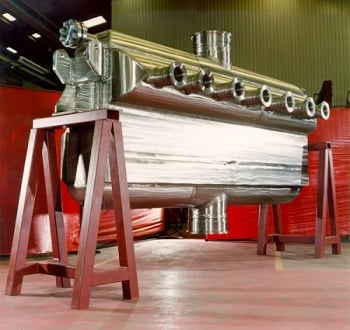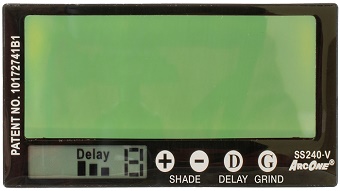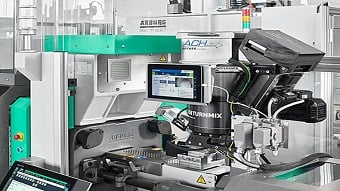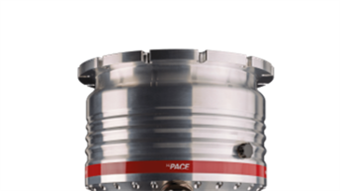The Need for More Compact Heat Exchangers
Shawn Martin | January 24, 2018 Source: Heatric USAThe increased heat transfer rate of a compact heat exchanger addresses the needs of a diverse list of applications. These thin-walled units exhibit exceptional heat transfer coefficients. They provide for both size and weight reductions. Some units are designed to have a higher resistance to fouling, while capital equipment costs can be lower when applications require costly corrosion-restraint materials as the bill of materials is substantially lower when compared to traditional shell and tube heat exchangers.
Source: Heatric USAThe increased heat transfer rate of a compact heat exchanger addresses the needs of a diverse list of applications. These thin-walled units exhibit exceptional heat transfer coefficients. They provide for both size and weight reductions. Some units are designed to have a higher resistance to fouling, while capital equipment costs can be lower when applications require costly corrosion-restraint materials as the bill of materials is substantially lower when compared to traditional shell and tube heat exchangers.
Compact Heat Exchangers (CHE)
Compact heat exchangers (CHEs) are characterized by high heat-transfer surface area-to-volume ratios. While they are not a new technology, there have been significant improvements to their designs in order to address the limitations of operating pressure and fouling. The most common CHEs include plate-and-frame heat exchangers, diffusion-bonded heat exchangers, plate-fin heat exchangers and spiral heat exchangers.
Plate-and-frame heat exchangers are the most dominant CHE in the market today penetrating a wide variety of industries and applications from HVAC, food and beverage, refrigeration and engine cooling to petroleum refining applications. They are available in gasketed or all-welded construction.
Gasketed plate-and-frame heat exchangers provide for an efficient heat transfer mechanism in a small footprint. The design is very flexible as well and they are easy to service and maintain. They are often the most efficient option when replacing conventional shell and tube heat exchangers as long as design temperature and pressure limits are within an accepted range, up to 450 degrees Celsius and 40 bar.
All-welded plate-and-frame heat exchangers are more suitable for processes that involve aggressive media or high temperatures where gaskets cannot be used. Designs may incorporate countercurrent flows or an “overall countercurrent flow” with multiple pass arrangements on both the hot and cold sides of the heat exchanger to help improve the heat transfer rate.
High turbulence created within the corrugated plate channels of an all-welded CHE helps minimize laminar films present on the surface of the heat transfer area. This helps improve the heat transfer coefficient when compared to a shell-and-tube heat exchanger.
Diffusion-bonded heat exchangers, more commonly known as printed circuit heat exchangers or PCHEs, are unique in that they operate outside the usual limitations of other plate type exchangers. They excel in high-pressure, high-temperature applications with a maximum design pressure greater than 900 bar and an operational temperature range from deep cryogenic to over 900 degrees Celsius.
The diffusion bonding manufacturing process is used to create a stack of flow plates. The interfacial area between two metal flow plates is intertwined at the atomic level allowing for incredibly precise construction of internal flow passages.
PCHEs, like those manufactured by Heatric, have found successful implementation in the oil and gas industry, power generation, chemical processing and for power storage of renewable energy. Due to the high structural integrity cost, savings are substantially higher as they are seen as an attractive long-term investment with reduced maintenance costs and an increased life expectancy.
Plate-fin heat exchangers contain corrugated sheets that are separated by flat metal plates creating a series of finned chambers. Fluid streams flow through alternating layers of the heat exchanger, which increases the available heat transfer area. They are predominantly manufactured from aluminum and are able to accommodate gases, liquids and two-phase fluid streams.
Plate-fin heat exchangers are, however, prone to fouling due to their small flow-channels. They have been widely used in many industries, including the aerospace industry, due to their compact size and lightweight properties.
Spiral heat exchangers have a unique circular, single-channel design and are ideally suited for dirty and fouling process duties. They incorporate two channels in a counter-flow arrangement. They are said to have a self-cleaning feature as the increased drag or fluid friction on the fouled surface helps dislodge the blockage and keep the heat exchanger clean.
Spiral heat exchangers are robust and exhibit long service intervals. During maintenance operations they are opened up like an oven and the flow channels can be pressure washed in order to remove any buildup of foulants.
Design Considerations
The efficiency gains achieved when implementing a CHE coupled with their ability to reduce the size and number of units required for a given application typically outweighs their disadvantages. They do however require a thorough understanding of the intended application as they operate over narrower pressure and temperature ranges. They are also subject to plugging due to the narrow flow path and are more susceptible to corrosion fatigue when materials of construction are not addressed as wall thickness is typically less than 10 mm.
CHEs offer significant space savings, superior heat recovery and a higher resistance to fouling when design considerations are carefully evaluated. They offer an enhanced heat recovery rate that can be quantified as well as additional energy saving benefits and cost reduction that can be defined throughout their lifecycle.
Resources:




